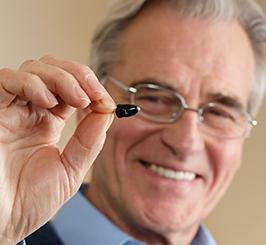
As more and more states in the US either legalize or decriminalize the use of medical marijuana, an increased number of people are interested in the effects, benefits, and risks of this once "taboo" drug. The use of medical marijuana is especially becoming more prevalent among senior citizens, especially as the Baby Boomer generation continues to age. Although many studies have now concluded that marijuana is a safe and effective alternative to pain management in contrast to traditional pharmaceuticals, it is still difficult to know the difference between various strains and how they can benefit senior citizens. Below is a short, comprehensive guide on the differences between the two main strains of marijuana - Sativa and Indica, and their role among senior citizens.
Overall Benefits of Sativa for Seniors- Sativa is a strain of marijuana best known for providing energy, and thus is most optimally used during the day when one wants to focus and accomplish tasks. Seniors who may have trouble gathering energy to perform activities of daily living such as cleaning, washing laundry, and cooking, may be more motivated to perform such activities when using Sativa. Furthermore, Sativa tends to activate creativity in the brain and thus seniors may find menial activities more enjoyable, as well.
Sativa is a catalyst in stimulating appetite and helping to alleviate nausea which is beneficial for individuals suffering from the effects of cancer and chemotherapy. It is also useful in alleviating headaches, as well as sore or congested throats. Sativa produces a cerebral "head high" rather than a body high and therefore may not be strong enough to relieve bodily aches and pains. Sativa can improve one's mood, and therefore seniors who are suffering from depression due to chronic pain or a terminal illness may experience signs of increased laughter, talkativeness, and enhanced audio and visual effects.
Medical Use of Sativa for Seniors:
- Mental and Behavioral Issues like Depression and ADHD
- Stimulates Hunger and is Useful for Patients with Certain Forms of Cancer
- Relieves Headaches and Migraines
- Relaxes Muscles and Relieves Pain
- Acts as an Expectorant
Common Effects of Sativa
- Stimulating Head High
- Feelings of Well-Being and Ease
- Energizing and Thought Provoking
- Up-Lifting and Cerebral Thoughts
- Increases Focus
- Promotes Creativity and Boosts Your Imagination
Overall Benefits of Indica for Seniors- Indica is a strain of marijuana best known for providing relaxation. Unlike Sativa, which helps to boost energy, Indica strains should generally be used at nighttime as they tend to create a tired or drowsy effect. For seniors who suffer from insomnia and would prefer a natural sleep aid rather than traditional medications, it is recommended to use Indica strains rather than Sativa strains.
Indica provides a more powerful body high than Sativa, and therefore is more useful as a pain suppressant and muscle relaxant, especially for seniors suffering from Cancer, Arthritis, or Glaucoma. Seniors recovering from surgery may find that smoking or ingesting Indica reduces nausea and increases appetite, consequently preventing weight loss and frailty.
Common Effects
- “Couch-Lock” Body High
- Reduces Nausea
- Sleep Aid
- Relieves Migraines and Head Aches
- Relaxes Muscles and Relieves Pain
Medical Use:
- Chronic Pain
- Muscle Spasms
- Constant or Persistent Nausea
- Specific Diseases such as Fibromyalgia, Multiple Sclerosis, and Lupus
- Sleep Aid for People with Insomnia
- Epilepsy
- Glaucoma
- Anxiety
Risks and Warnings of Medical Marijuana for Seniors
Although cannabis is a drug with very low toxicity levels, especially compared to many FDA approved pharmaceuticals, there are still several inherent risks associated with medical marijuana. Below is a list of risks and warnings for seniors considering the usage of medical marijuana:
- Dizziness
- May increase the risk of bleeding
- May affect blood sugar levels especially those with diabetes
- May cause low blood pressure
- Use cautiously in people with liver disease
- Use cautiously in people on estrogen therapy
- Use cautiously in people with immune disorders
- May increase eye pressure as well as dry eyes
- May cause abnormal heartbeat
- Drowsiness or sedation may occur, caution if driving or operating heavy machinery
- Avoid use in people with lung problems
Note that most strains of marijuana are not purely indica or sativa, but are usually a hybrid between the two. Additionally, many medical marijuana dispensaries sell both THC and CBD strains of Sativa and Indica. THC—Has a stimulating effect, is responsible for the “high” in marijuana. CBD—Does not produce a psychoactive “high” and has an anti-epileptic and anti-anxiety effect. Please consult your doctor before ingesting or smoking medical marijuana.
Article written by Nick Schaller and Alex Milzer


Comments